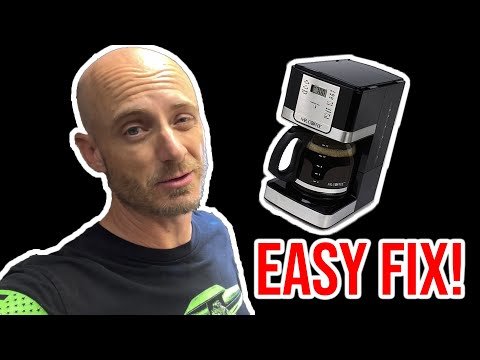
### Step 1: Check for Simple Issues
Before diving into more complex solutions, start with the basics:
– **Ensure Proper Setup:** Make sure the coffee maker is plugged in and that the power outlet is functioning.
– **Check Water Reservoir:** Verify that there is enough water in the reservoir. Some machines have minimum water level requirements to initiate brewing.
– **Inspect Brew Basket:** Confirm there’s no blockage in the basket area or that it isn’t overflowing with coffee grounds. An excess of grounds can hinder water flow.
### Step 2: Descale Your Coffee Maker
Calcium and mineral deposits from water can build up over time, clogging your coffee maker’s heating element and water lines. This is often the culprit when machines fail to brew correctly.
– **Use Vinegar Solution:** Fill the reservoir with a mixture of equal parts white vinegar and water. Run a brewing cycle without adding coffee. Afterward, run 2-3 cycles with just clean water to rinse any vinegar taste.
– **Commercial Descaling Products:** Alternatively, use a commercial descaling solution following manufacturer’s instructions.
### Step 3: Clean All Accessible Parts
Coffee oils and residue can also obstruct water flow and affect brewing performance:
– **Wash Removable Parts:** Clean all removable parts (e.g., the brew basket, carafe, and filter) with soapy warm water regularly.
– **Clean Non-Removable Parts:** For parts that cannot be removed, use a damp cloth to wipe down accessible surfaces.
### Step 4: Check and Clean the Pump Valve
The pump valve can sometimes get blocked with debris or scale build-up:
– **Locate Pump Valve:** Refer to your machine’s manual to locate this part; it’s typically situated at the bottom near the heating element.
– **Clear Debris:** Use a paperclip or needle to gently remove any debris clogging this valve.
### Step 5: Inspect Heating Element
If your coffee maker heats up but doesn’t brew:
– **Check for Signs of Malfunctioning Heater**: Look for visible signs of damage or corrosion. If you suspect an issue with your heating element, it might be time for professional repair or replacement as these components are not easily serviced at home.
### Step 6: Airlocks
Airlocks can prevent water from flowing properly through your machine:
– **Run Dry Brews**: Removing air from internal tubes by running a couple of dry brewing cycles (without using coffee) might help.
### When Is It Time To Call A Professional Or Replace The Unit?
If none of these steps address the problem:
1. **Consult Manufacturer Support:** Check if manufacturer support offers guidance specific to your model.
2. **Professional Repair Services**: If under warranty or cost-effective, consider having it professionally repaired.
3. **Consider Replacement**: Sometimes repairing an old coffee maker might be more expensive than purchasing a new one, especially if newer models offer upgrades and improved functionality.
**Preventative Maintenance Tips**
To ensure longevity and optimal performance:
1. Regularly descale your machine every 3–6 months depending on usage.
2. Clean removable parts weekly or bi-weekly based on usage frequency.
3. Replace reusable filters as recommended by manufacturer guidelines.
By following these tips, not only will you potentially fix your current problem but you’ll also extend the life span of your beloved appliance ensuring many more mornings of hassle-free caffeination!